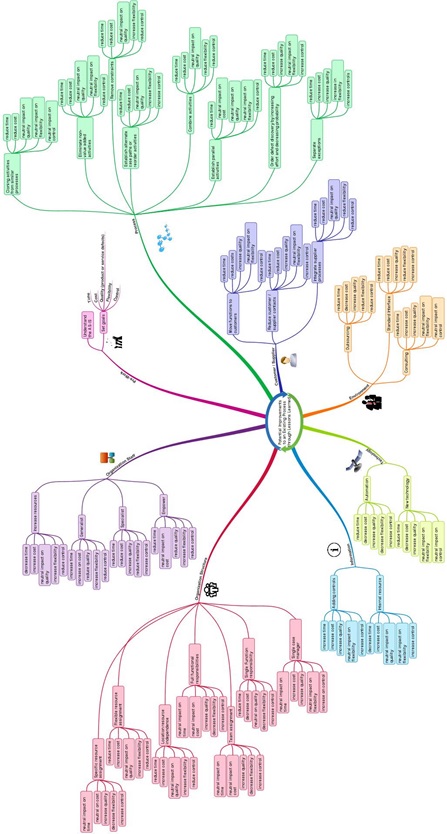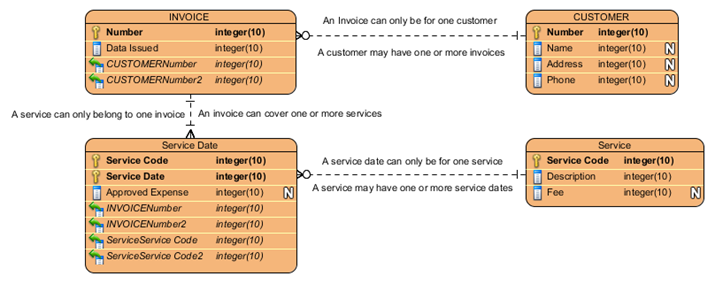This article focuses on the redesign of an existing business process rather than just improving it incrementally. Most Business Process Management (BPM) efforts focus on making small improvements using Lean/Six Sigma, plus other techniques on an existing process. These improvements range from reducing time/cost, gaining quality/flexibility to the tightening of controls. However, there is a radical approach called Product-Based Design (PBD) that uses the end-product as a guide to redesign rather than using the existing, perhaps even undocumented, process. PBD has resulted in a 35% reduction in time and 75% reduction in cost for processes producing information intensive products such as invoices, payments, orders, permits, and licenses. [1]
Business Process Management
Essentially there are two Business Process Management (BPM) approaches for process improvement. The traditional approach [2],[3] is based on analyzing an existing process and then applying lessons learned to improve the process based on stated goals (reduce time/cost, gain quality/flexibility, and/or tightening controls). The result of the traditional approach is incremental improvements to an existing process. See below mind map (Figure 1).

Figure 1. Mind map on the Traditional Process Improvement Approach
Product-Based design is a radical approach to process improvement. Instead of analyzing an existing process, it ignores the existing process. It starts with a clean process slate and focuses on the specification of the final process product or service to guide its effort. See Figure 2 below.

Figure 2. Mind map on Product-Based Design Approach
Special Note:
- PBD assumes that the final product is correct (i.e., provides customer value); this is process redesign – not product redesign.
- PBD is more appropriate than traditional process improvement when a business needs a dramatic change to remain competitive or even continue to exist in the marketplace. PBD can also be the method of choice when there is no existing process (new product) or the existing process is undocumented.
- PBD still needs performance measurements from the existing process to support a credible business case that justifies the redesign effort.
Product-Based Design
PBD consists of five steps similar to the traditional approach. The real difference between them is in the analysis step. Note that the five steps are an iterative life cycle. The future analysis step may change to the traditional process improvement approach.
1. Define – determine the goals (reduce time/cost, gain quality/flexibility, tightening controls with measurements).
2. Analyze – decompose the product specification into data elements and identify the associated business rules. This is called a Product Data Model [4]; this is similar to a Logical Data Model except it only covers a product. Associate a process activity with each data element, then sequence the process activities and decisions per the business rules; note that business rules may be challenged. Draw a process map with one of the standard diagraming techniques (e.g., Business Process Modeling and Notation/Decision Modeling and Notation - BPMN/DMN [5]). The business analyst team may construct the initial process with the purpose of minimizing total process time through parallel activities and/or minimizing total process cost through serial value-added activities.
3. Evaluate – conduct a gap analysis, compare existing and redesign process measurements, and build a credible business case.
4. Implement – establish urgency for change, manage resistance, train staff, and implement the redesigned process.
5. Control – create a dashboard (leading/lagging process indicators [6]) for the process owner to manage the redesigned process. The dashboard typically consists of trend and control reports.
Invoice Processing - An Example
Our example is a consulting business experiencing cash flow problems. Essentially, the business is issuing invoices to customers late. So late that the Chief Financial Officer (CFO) has determined that the business is 6 months away from filing for bankruptcy. The CFO requests your services as a Business Analyst (BA) to recruit a team to redesign the invoicing process. The CFO advises you that the business product, the invoice, continues to meet both the business and customer needs for billing. But, due to the business urgency, the CFO specifically says, “redesign” the process with a goal of reducing the time to invoice by 80%.
With the goals set (reduce time by 80%), your team proceeds to develop a Product Data Model by decomposing the invoice (end-product) from its specifications. The invoice consists of various data elements (unnormalized [7]):
- invoice information (invoice number, date issued), total cost and applied discount is derived
- customer information (customer number, name, address),
- service details (service code, description, fee, approved expense)
Your team decides to capture these data elements in a Logical Data Model [7] (entities, attributes, and relationships). See Figure 3 below.

Figure 3. Logical Data Model of the Invoice Product
After building the Logical Data Model, your team associates each data element with a process activity needed to assemble the end-product – the invoice (see Figures 4 and 5 connected via annotations, e.g., Expense Decision). Note that your team
- Decides on expense approval (quality controls) at the beginning of the process to minimize cost
- Uses parallel activities to minimize time
- Provides flexibility by deciding on discounting at the end of the process
Using the business rules (contained in tables in the DMN Business Knowledge shape – Expense Approval Levels), your team sequences the activities along with needed gateways for alternate/exception routing in a BPMN/DMN process map (note “+” activity type, sub processes are collapsed). Some data elements may require multiple activities and may be in parallel depending on the business rules. Your team will add pools and swim lanes later after the redesigned process is stable; note when there is no existing process (or ignoring it as in redesign), it is a best practice to establish the process first and then add the pools and swim lanes (actors) later.

Figure 4. Initial BPMN Model of Invoice Process

Figure 5. Initial DMN Model (Expense Decision) of Invoice Process
With a draft of the redesigned process, you now can evaluate it against the goals. You may follow-up with the traditional approach techniques (see Figure 1). Assuming the goals are achieved, you proceed to implement the process along with the process owner dashboard.
Summary
The PBD starts with examining the end-product data elements and associated business rules. The BA team then uses this information to redesign a process that produces the end-product. Special note about the team. The lead BA should remind the team members that this is a redesign effort. This is a real challenge especially for the team members who are knowledgeable with the existing process. It may be best to recruit team members with a “fresh pair of eyes.” Note that there is no doubt that the BA team will consider automation in the redesign. In this effort, the BA team should keep in mind a quote attributed to Bill Gates [3] on BPM.
“The first rule of any technology used in a business is that automation applied to an efficient operation will magnify the efficiency. The second is that automation applied to an inefficient operation will magnify the inefficiency. [7]
In my experience, all benefits come from redesigning or improving existing processes, not by applying automation through software. Software only facilitates the process improvement.

Author: Mr. Monteleone holds a B.S. in physics and an M.S. in computing science from Texas A&M University. He is certified as a Project Management Professional (PMP®) by the Project Management Institute (PMI®), a Certified Business Analysis Professional (CBAP®) by the International Institute of Business Analysis (IIBA®), a Certified ScrumMaster (CSM) and Certified Scrum Product Owner (CSPO) by the Scrum Alliance, and certified in BPMN by BPMessentials. He holds an Advanced Master’s Certificate in Project Management (GWCPM®) and a Business Analyst Certification (GWCBA®) from George Washington University School of Business. Mark is also a member of the Association for the Advancement of Cost Engineering (AACE) International and the International Association of Facilitators (IAF).
Mark is the President of Monteleone Consulting, LLC and author of the book, The 20 Minute Business Analyst: a collection of short articles, humorous stories, and quick reference cards for the busy analyst. He can be contacted via – www.baquickref.com.
References:
- CROM, P.J.N. and REIJERS, H.A. (2001): Using prototyping in a product-driven design of business processes. Proc. of the Open Enterprise Solutions: Systems, Experiences, and Organizations Conference, Rome, 41-47, Luiss Edizione.
- Monteleone, M. A., (2010): Structuring AS-IS and TO-BE Process Improvement Discussions using the Fishbone Diagram. Modern Analyst
- Dumas, M., La Rosa, M., Mendling, J., Reijers, H., (2013): Fundamentals of Business Process Management
- Reijers, H. A., (2005): Product-Based Design of Business Processes. Applied within the Financial Services, Eindhoven University of Technology, Department of Technology Management
- Debevoise, T., Taylor, J., (2014): The MicroGuide to Process and Decision Modeling in BPMN/DMN
- Monteleone, M. A., (2010): A Baseball Analogy – Monitoring Processes through Leading and Lagging Metrics. Modern Analyst
- Monteleone, M. A., (2010): Logical Data Analysis – Understanding Data and Their Relationships. Modern Analyst